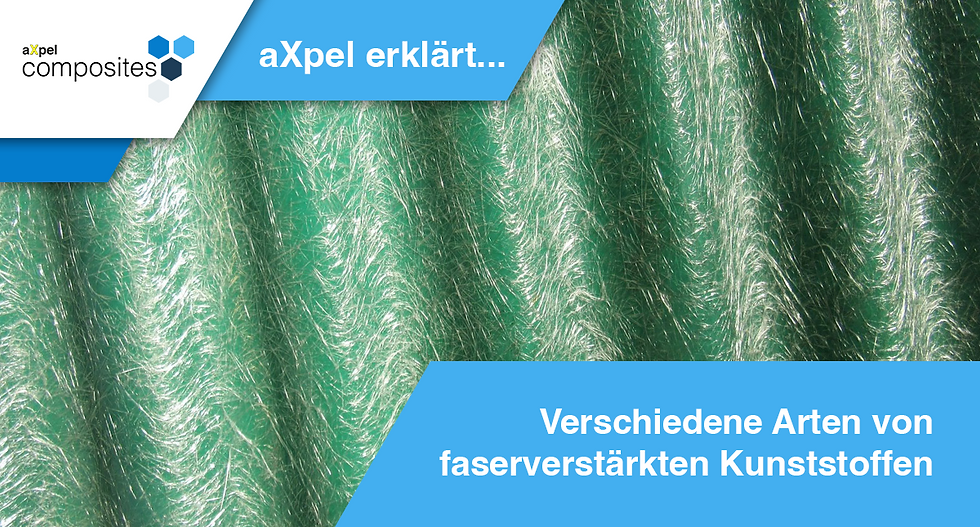The diverse world of fiber-reinforced plastics: Discover the different types of FRP
- aXpel composites

- May 30, 2023
- 2 min read
Updated: May 6, 2024

FRP are high-performance materials that are characterized by a combination of lightness and strength. In this article we would like to give you an overview of the different types of FRP used in industry today.
Glass fiber reinforced plastic (GRP)
FRP is a common material composed of fiberglass and a polymer matrix material, typically polyester, vinyl ester, or epoxy resin. GRP offers high tensile strength, corrosion resistance and electrical insulation. It is used in numerous applications such as boat hulls, piping, wind turbine blades and automotive components.
Carbon fiber reinforced plastic (CFRP)
CFRP consists of carbon fibers and a polymer matrix, usually epoxy resin. It is one of the best-known FRP materials and is characterized by exceptional strength and rigidity combined with low weight. CFRP is widely used in aerospace, racing and high performance vehicles and sports equipment.
Aramid fiber reinforced plastic (AFRP)
AFK consists of aramid fibers, such as Kevlar, and a polymer matrix, usually epoxy resin. AFK is characterized by its high tensile strength, excellent impact strength and resistance to elongation. It is used in bulletproof vests, helmets, body armor and in some cases in aerospace applications.
Basalt fiber reinforced plastic (BRP)
BFK is a relatively new material composed of basalt fibers and a polymer matrix. Basalt fibers offer good tensile strength, thermal resistance and environmental sustainability. BFK is used in various applications including construction, automotive and infrastructure.
Natural fiber reinforced plastic (NFRP)
NFRP consists of natural fibers such as flax, hemp, jute or kenaf, which are embedded in a polymer matrix, often polypropylene or PLA (polylactide). NFK are bio-based and renewable materials that offer an environmentally friendly alternative to conventional FRP. They are used in various industries, including automotive, construction and packaging.






Comments